Paul was my sounding board, devil’s advocate, ‘camerado,’ goad, fount of naughty ideas, and sympathetic ear.
SAN IGNACIO, Cavo, Belize — There was a notorious news photo from a scorching hot Tuesday in Austin, Texas, July 1967. I’m wearing a plain white dress my mom made for me a couple of years earlier for my high school graduation festivities. I’m staring at nothing, straight ahead, utterly blank, focused on my mother-in-law’s innate dignity as I leave the funeral home to get into the limo that will carry us to the cemetery in San Antonio to bury my murdered husband.
To my left, not in the picture, a swarm of news photographers, including the Department of Public Safety’s well-known surveillance shutterman, is calling me, trying to get me to look at them, asking the questions idiots always ask survivors, like “How do you feel?” I don’t hear them and I don’t see them. Between me and the news mob, a madman, with huge, angry eyes, a bristling black beard, and a snarling, teeth-gnashing grimace, lunges at the intruders, keeping them away. That was my friend, Paul.
Robert Paul Pipkin was born on August 25, 1946, in Ft. Worth, Texas, the son of Louis Sr. and Roselle Pipkin. Louis Sr. started on the “packing house (slaughter) floor” and rose to upper management at Swift & Company, a major meat-packer in north Fort Worth. Roselle was a Junior High School teacher for the Fort Worth Independent School District, who literally lost her voice (vocal cord damage) from yelling at her students to behave!
Paul grew up with a conscious
working class perspective.
Thanks to his Uncle Lee Pipkin, a Meatpackers Union activist, and despite his family’s relative affluence, Paul grew up with a conscious working class perspective that he retained throughout his life. Blessed or burdened with an eidetic memory, he could sniff out hypocrisy a mile away and was a born rebel. Despite this, he became a high-ranking Boy Scout, and knew all the stars in the sky. His father was a 32nd Degree Mason and Paul was for a while a DeMolay member. He attended Eastern Hills High School — at that time, like all Ft. Worth schools, completely segregated — where he and I first crossed paths, but that’s all we did.
In his years at EHHS, Paul hosted “political conversation groups” in his second story bedroom at his parents’ house in East Fort Worth, becoming lifelong friends with Charles Bishop and Richard Fant. During the 1962-1963 school year, Paul and Charles organized a semi-left leaning student political party, “Students For a Free America.” The members wore American flag arm bands to show their patriotism.
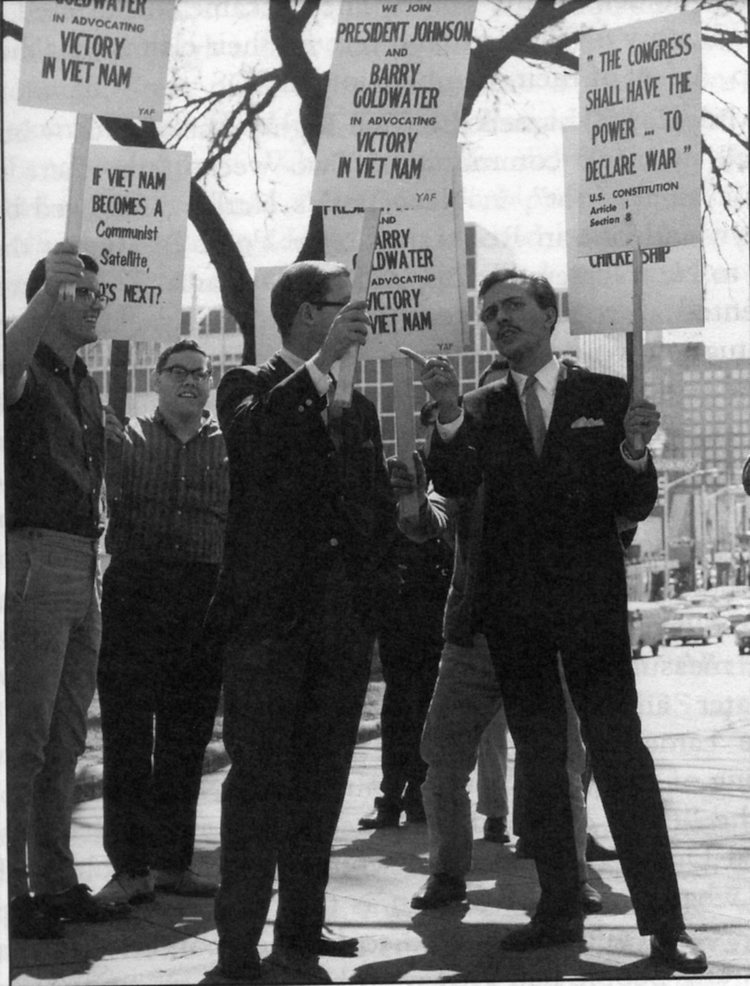
Paul, right, debates Vietnam War with members of the Young Americans for Freedom (YAF). Police surveillance photo.
Given the “pseudo-elite” mentality of the average high school students of the day, their response was to immediately condemn the “SFA,” calling the group’s members “NAZIs!” At this time, Charles Bishop was the only EHHS student who wore a “Marlon Brando style” black leather jacket, a “Harley” cap and rode a big Vee-Twin Harley Davidson “dresser.” During the summer of 1963, with Charles’ help, Paul obtained an ex-“police bike,” a 1956 Harley Davidson FLH “Police Special,” and adopted the de rigueur uniform of the “bad-azz biker.” Richard Fant got his Hawg and “uniform” shortly after, forming what was probably east Fort Worth’s, and Eastern Hills’, first “motorcycle gang.”
During the 1962-1963 school year, Paul’s political leanings were raising much ire with the school’s administration, notably R.C. Johnson, Principal. “RC” wasn’t your typical former football coach administrator, he was, however, a full-blown buffoon! During Freshman Orientation, RC went on and on, not about the importance of getting a good education to earn a good living, but about the importance of conveying to others that you have money, even if you don’t! He told students to “carry washers in your pockets” to jingle, this way “people will think you have money!”
Paul stormed out the school’s front door.
This juvenile approach to adulthood irritated many intelligent students, but really got under Paul’s skin, so much so that he and RC got into a yelling match in the foyer of the school. The match ended with Paul telling RC, in no uncertain terms, where he could go, and unceremoniously throwing his schoolbooks into RC’s face. Paul stormed out the school’s front door.
For the 1963-1964 school year, he attended Ft. Worth Technical, a less-white-bread (due to its working class and “Mexican” component) high school that offered both academic and high caliber trade classes to students not generally bound for college. Meanwhile, due to the incompetence of administrative staff, Charles had to attend 11th grade twice, also leaving EHHS to attend “Tech” for his senior year.
By fall of 1964, Paul and Charles had gravitated towards Students for A Democratic Society (SDS), with Paul at UT-Austin and Charles at Eastern Hills. As a UT freshman, Paul quickly found his way to the nascent campus left but was soon dissatisfied with the UT chapter of SDS, because of its “hippy-dippy” aspects and, no doubt, because influence in that group was often based, as in society as a whole, on characteristics other than sheer intelligence.
There were always rumors in Austin that Paul was a police informant.
There were always rumors in Austin that Paul was a police informant. Well, that’s a hard call. He wasn’t the only SDS/New Left activist who enjoyed playing mind games with the campus Red Squad, especially the notorious snake charmer, Lt. Burt Gerding. He also liked to play head games with more “lily-livered” members of the left; he didn’t give a rat’s ass by then for anyone’s opinion. Au contraire, he liked to shock people to see how they would react. He always had a pistol or two, well-maintained and ready for action; another no-no in the new hip culture.
Paul tried to learn things from cops, things about procedures, for example, that at times came in handy. Before any big demonstration, we used to ride around checking the positions of riot control troops hidden away in nearby parking garages, etc., awaiting their cue. Nice to know where they’d be coming from, and we’d plan an escape route accordingly. I believe that on one occasion, long after he’d been tarred with the “cop” brush, Paul was instrumental in the arrest of several individuals who were selling heroin to teenagers in UT-area alleyways, while others wrung their hands and looked away. Tell me he was wrong!
What I know is that he could have sold me a dozen times, had he wanted to cash in as a fink; instead, he always had my back.
Paul and two good friends joined the Communist Party USA in 1965.
Paul and two good friends in the Austin movement, George John Vizard IV and Charles Smith, joined the Communist Party USA in 1965 and were soon joined by yours truly, incensed at having been left out on the first male chauvinist pass. We were the first completely open and public CPUSA chapter in Texas since… maybe ever!
While he continued to value and draw from his CP experience and contacts, Paul didn’t stay in the party long after George’s July 1967 murder. He and I visited the then-Union of Soviet Socialist Republics in November 1967 to see for ourselves if the things the U.S. government and media would have had us believe about the “Russians” were true and we mere dupes of the Red menace.
Three weeks in Moscow, Leningrad, and the southernmost then-Soviet Republics were experiences that gave insights for a lifetime, though empires fell (as did the USSR) and movements stalled. By the way, for the last 50 years, whenever he could, Paul visited George’s grave in EsSay, to talk things over. I can’t help but think that they planned the coincidence of his memorial, held this past July 23, with the anniversary of George’s passing!
His wife became one of the last true burlesque dancers in the U.S.
The student left movement of the 1960s stalled, and faltered, with Richard Nixon’s ascendancy to the oval Office. A lot of people didn’t quite know what to do with themselves. Many opted for rural lifestyles, going “back to the land.” City boy Paul moved back to Ft. Worth, got married, and for a time operated a bar on the working class North Side. His wife, beautiful daughter of a college professor, became under his tutelage one of the last true burlesque dancers in the U.S., “Miss Diana King,” who could, like the storied Gypsy Rose Lee, captivate by sinuously removing just one elbow-length glove.
With Charles Bishop, Paul helped launch SDS chapters at UT-Arlington, TCU, UNT-Denton, SMU, and an “at-large” chapter in Fort Worth, while both were active in several progressive minority campaigns for local offices and community organizations.
Paul joined Anton LaVey’s Church of Satan, rising to the rank of Third Degree Priest.
Paul joined Anton LaVey’s Church of Satan, rising to the rank of Third Degree Priest, and as such officiated at weddings, memorials, and other events. His last “official” act as a Satanic Priest was to preside over Charles & Carolyn Bishops’ 50th Wedding Anniversary Party on Dec. 31, 2016. He’d been in the wedding party back on Dec 31, 1966!
Paul and his wife moved back to Austin for a while as her dance career took off. They became members of an Austin-area nudist club and took me to visit a few times; it was one off the most wholesome places I’d ever seen. I helped him bring LaVey’s daughter, Karla LaVey, to speak to a packed crowd at UT-Austin in about 1974.
Paul’s marriage blew up in a spectacularly-contested divorce
Back in Ft. Worth again, Paul’s intensity, and his penchant for the bizarre and extreme finally palled on his wife, and the marriage blew up in a spectacularly-contested divorce. Also during that time, both of his beloved parents died, and in 1977 Richard Fant was shot dead in one of those incidents that only happen in Texas: climbing through his ex-wife’s bedroom window. Paul and Charles were instrumental in getting Richard’s ashes painted onto his Harley.
Paul came back to Austin for a while, but couldn’t find his niche there. In San Antonio, however, the true love of his life, Linda Falkenstein, a daughter of carnival people, entered his world enthusiastically and became a highly successful stripper and Satanic acolyte. They were married on December 13, 1976.
Although they had no children, they took in Paul’s cousin’s children, two young Vietnamese-Americans whose family was falling apart, and Paul took great joy in their company and in having the opportunity to nurture and mentor “the kids.” He worried about them and was hugely proud of both Robert and Kim-Anh for the rest of his life.
He embarked on a career of couchsurfing maintained until shortly before his death.
He remained active in many local electoral and reform efforts. Linda became an alcoholic and drug-dependent, however, and was unable to kick the disease of addiction. He was her caretaker, and her death on January 30, 1996, devastated him. He eventually lost their home for non-payment of taxes — it was collapsing around his ears anyway — and embarked on a career of couchsurfing that he maintained until shortly before his death on July 9, 2017, in a San Antonio-area nursing home.
Ironically, shortly before Linda’s death, Paul found a great job as a paid, part-time representative for the National Association of Government Employees (NAGE), a division of Service Employees International Union (SEIU). AFL-CIO). He went full time on July 15, 1996, along with co-joining the Texas Public Workers Association (Communications Workers of America, Local 6100, AFL-CIO). The job lasted until 1998.
In the mid-’90s, former students from Eastern Hills got together for a series of reunions and Paul had a good time seeing how everyone else had turned out. But ultimately, while he loved to talk about old times, his old times were different from those of most, and talk of classmates’ retirement cruises, surgeries, and grandkids went right by him.
When the people’s Occupation of Wall Street began in September 2011, and spread like wildfire to cities around the country, Paul’s native laziness and earned cynicism, along with recurring depression, had led him to a nadir. He was living with a generous couple, acting as nanny to their school-age boys in return for room and board, and obsessing on professional women’s tennis. He had a conspiracy theory about Maria Sharapova never getting her deserved breaks because her Dad was a Red General, and would tune in to various websites in the wee hours — he was always a night person — to hear her bouts live.
In Occupy San Antonio he found a new generation of youthful activists.
When Occupy San Antonio announced it was occupying the Hemisfair grounds, Paul went downtown with a couple of old political friends expecting to see something superficial and doomed. Instead, he found a new generation of youthful activists, but of a more working-class character than the New Left of 1961-’70 and, astoundingly eager to listen to and learn from older activists who had in any way opposed the State.
He became a mentor to a first-time Green Party candidate for U.S. Congress, Meghan Owen, and became very active in the Greens. He ran on the Green ticket for Bexar County Tax-Assessor Collector in 2012, Bexar County Judge in 2014, and U.S. House of representatives in 2016, in campaigns stressing the economic and environmental racism affecting South San Antonio.
In 2014, he was elected to the Greens’ National Committee of the United States, a position he held until his passing. He was Co-chair in 2016 of the Steering Committee of the Green Party of the United States and a delegate to the GPUS’ 2016 Presidential Nominating Convention. He was also active in Communists and Anarchists of San Antonio (CASA), a reading group with one of the best names ever!
Two of his novels were published, The Angry Jigsaw (1968) as a “vanity” book (what we now call self-published), and The Fan-Shaped Destiny of William Seabrook: A Romance of Many Worlds, published by Hatchett Press, on August 15, 2001, in paperback on November 15, 2001; later re-published May 7, 2007.
Paul’s first novel was inspired by
events in Austin.
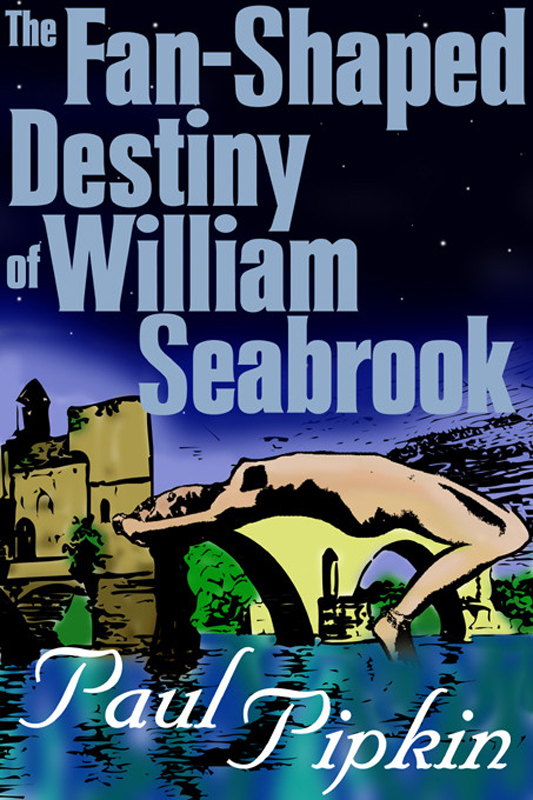 Paul’s first novel was inspired by events in Austin when employees at two late-night eateries near UT Austin tried to unionize; I’ve come to think of it as a kind of socialist realism novel, with a big streak of romance, for Paul was nothing if not a romantic, acknowledged in his second attempt. FSD was the first novel accepted for electronic publication by Random House, and a huge break for Paul, the result of assiduous attendance and participation in science fiction and writers’ events for several years. At 568 pages, it was a natural for electronic publication — but alas, look at the year, nobody had electronic readers yet and smart phones were still way in the future.
Paul’s first novel was inspired by events in Austin when employees at two late-night eateries near UT Austin tried to unionize; I’ve come to think of it as a kind of socialist realism novel, with a big streak of romance, for Paul was nothing if not a romantic, acknowledged in his second attempt. FSD was the first novel accepted for electronic publication by Random House, and a huge break for Paul, the result of assiduous attendance and participation in science fiction and writers’ events for several years. At 568 pages, it was a natural for electronic publication — but alas, look at the year, nobody had electronic readers yet and smart phones were still way in the future.
Random House dropped the electronic publishing effort and FSD with it, dooming two or more sequels Paul was already penning. FSD, combining cutting-edge physics with love that defies death, has become something of a cult classic. It is available as an e-Book and in good used paperback on Amazon. (Oh and hey, if you read it? I’m the one who first told him he was writing a novel and not a character sketch on a forgotten author. And so, there’s a “Mariann” in the book. But she is someone else, other, independent, and her thoughts and deeds are not mine. Just sayin’.)
When Paul and I connected, in Austin in the spring of 1965, it was at a party billed as “interracial” at a ranch near Lake Austin. I went with my Black and beautiful Biology lab partner, Ronald Bookman, with whom I would, mere weeks later, get thrown out of Roy’s Lounge on the Drag, along with George Vizard, who I would later marry, and a brilliant Black woman student, setting off civil rights marches that made me an activist while I flunked out of school.
When I left home to live with George, I rode on the back of Paul’s single-seat Harley.
Paul was at the lake party, too, and when we spotted each other we were both totally surprised; of all people to see throwing off the segregationist chains! We were friends from that day, the kind of friends you might not see for a while, but when you do, you pick up right where you left off. When I left home to live with George in the summer of ’65, I rode on the back of Paul’s single-seat Harley; by the time we reached Austin, my ass was chapped and his balls were, he claimed, about as bad, but there was no question of us not doing it. I wanted to go and he took me.
We argued about everything and ultimately always found common ground, except we could never agree precisely where on West 22nd St we’d huddled for safety on August 1, 1966, when Charlie Whitman’s deadly rain fell on the campus.
The worst fight we ever had was in Longview, Texas, in the bitter cold winter of 1965-66. Paul was working as a welder. George was trying to organize the local white working class. (No, for real!) I was huddling near the stove cooking for the guys; the three of us living in a two-room apartment in a little old lady’s house by a railroad track on about $60 a week.
When I told the guys I needed Tampax, Paul started giving me guff about how my grandmother managed such matters and how we couldn’t afford such frivolity; I was livid! Flinging his Navy peacoat onto the floor with intent to trample, I was shocked when a Hershey bar fell out of the pocket!! The dirty dog! I never let him live it down, but he and I split that candy bar while George shook his head in amusement and went out in the snow for sanitary items. In Leningrad two winters later, the old peacoat brought Soviet Navy veterans of World War II falling out of their bars to greet the “Amelican sailor!”
Through thick and thin, we always kept in touch. For years, if nothing else, we called each other on New Year’s Eve just past midnight, to discuss the state of the world. These calls could go on well into New Year’s morning, as we fed off each other’s ideas and experiences.
Paul Pipkin was my sounding board, devil’s advocate, camerado, goad, fount of naughty ideas, and sympathetic ear no matter what. He ate Wolf’s Brand chili cold outta the can and drank Dr. Pepper daily. He smoked a horrible big pipe filled with smelly Balkan tobacco for years, and bummed ciggies ever after. He was fascinated by everything kinky and would try anything once. He laughed at people who exercised and/or ate healthy foods.
He blew through three inheritances without a backwards glance, never filed for Social Security or Medicare until his final illness began, died thoroughly indigent. When we dropped acid together in 1966, and got to the place where you see everything connected by the shining web of the Life Force? Paul started grabbing at the air in front of his face! When I asked what the fuck he was doing, he said he wanted to tear through the veil, to see what was on the other side.
Break on through, brother, break on through!
— Mariann Garner-Wizard Vasquez, with a lot of help from Charles Bishop
[Mariann Wizard was among the founders of The Rag, The Rag Blog‘s print predecessor, and is a frequent Rag Blog contributor. She lives in Belize, Central America.]
- Read more of Mariann Wizard’s writing on The Rag Blog.

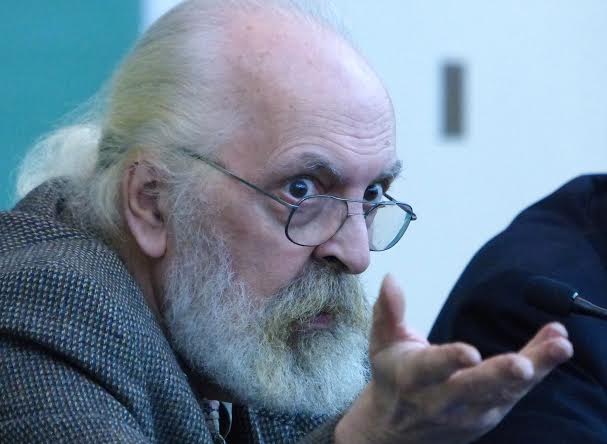
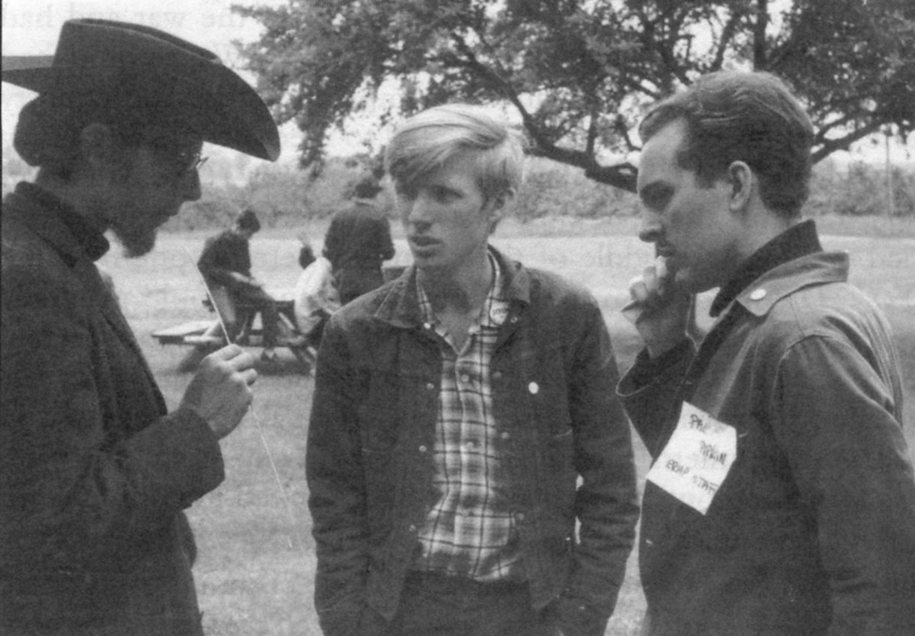
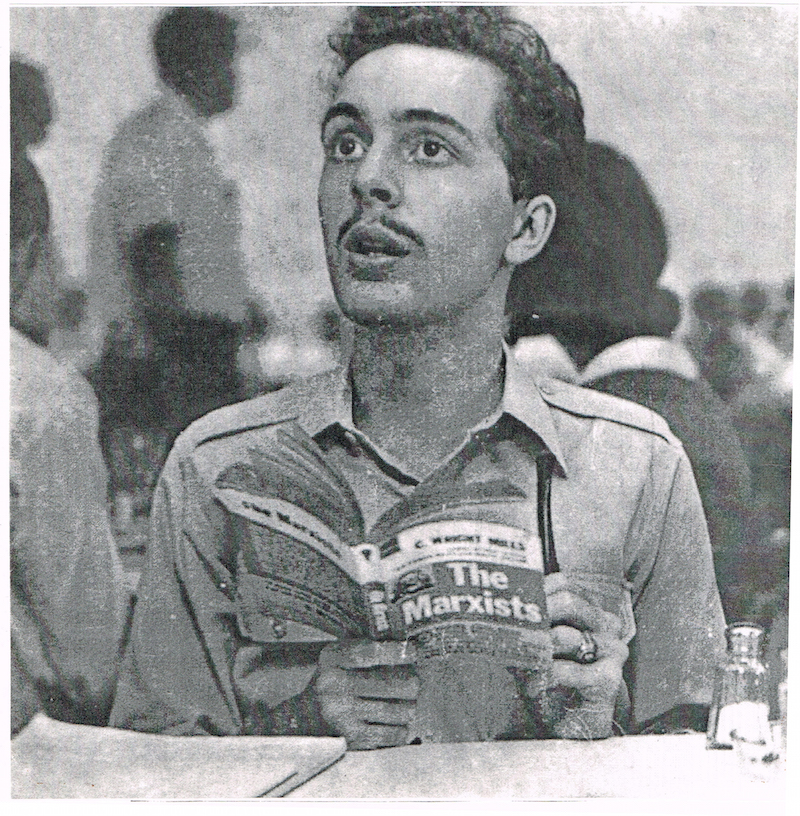
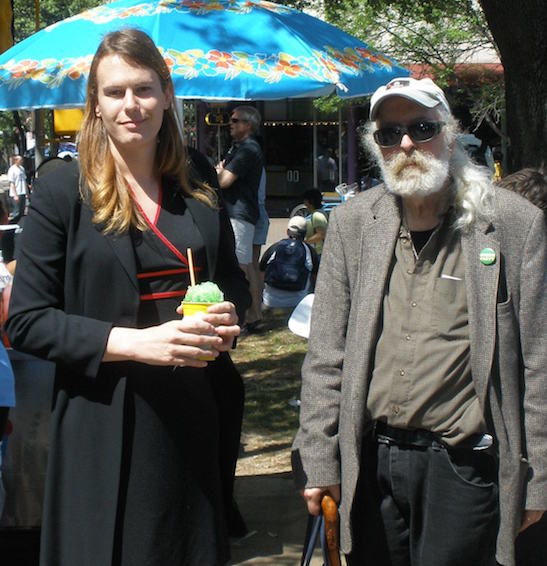

















A beautiful piece,lengthy, but chocked full of nuggets of the radical activism of the 60’s. What a story,it could be a movie R.P.P. Mariann a tour de force let’s write a screen play.
Herb, go on and get started! I’m with you! 😉
Herb;
I know nothing of screenplays or script writing, but I think it’s a helluva idea!!
I want a cameo role!
Thorne, you would have to be in it, maybe as one of those old guys who used to come to the marches? There was one really sweet, lively guy, Bill Roth, and another, Frank Horsfall, who used to stand under the stairs at the Austin library and look up girls’skirts. Hmmmmm…
What an extraordinary tribute to a complex man living in a complicated world. Beautifully written, Mariann. Brava!
Thanks, James.
This is a wonderful needed piece. I am thankful it exists. I found myself moving further into the hyperbole that is William Seabrook recently and the very strange history surrounding the man. One can easily get lost as much as one is inspired. Then here comes Paul and his book. A man who seemed perfectly suited to understand the strangeness and madness. I was already obsessed with Wamba and her Fan shaped Destiny when the postman delivered the book. Behind it is a void on a cultural level that is in itself a fascinating phenomenon, but could someone understand it without the Seabrook obsession? Who was this writer and how much of his tale was true? It’s like ordering a cupcake and finding an olive on top. I feel that if I was too write a book about my own Seabrook connections… it would be as odd and dense as Paul’s… but perhaps without the sexist overtones. The Bio you have laid down is incredibly helpful in setting a tone, but still so many questions exisit on this “cult classic” that seems to have had a very limited reach. I am working on a piece for my website to hopefully add to the mystery that the book, the author and William Seabrook have left the world to discover. I would love to hear more about his obsession and how long it took to write the book, but none the less.. I appreciate that your information maintains a presence on the online worlds.
Thanks, Lew. In my opinion, it’s Wamba’s story that remains untold.
Maybe you’ll give that a shot!
“Wamba’s Fan Shaped Destiny” by Lew Blink https://link.medium.com/md9cMuxOZ0
I gave it my best shot.:)
Awesome piece about my friend Paul Pipkin.
Thank you, Rep. Pacheco. Paul spoke highly of you. His outrage over South San Antonio’s problems, many of them due to overt racism, helped put the fire back in his political belly, pleasing me a great deal.
Thanks, Lew, I’m so glad this piece continues to find new readers, much as Paul’s book does.
I probably knew some of the answers to questions you may have about his quest, but now… it’s all kind of run together.
Paul was a strongly agnostic, materialit thinker, but his frequent encounters with the Inexplicable kept him a spiritual seeker.
In some other part of the Multiverse — a term now used by respectable physicists — I’m pretty sure he’s talking it all over with Seabrook.
I’d have to say also, it’s Wamba’s story that remains untold.
Many thanks to you, Mariann, for the original article and you, Lew, for the follow-up.
I’ve been interested in Seabrook’s work for a long time and I loved Paul’s FSD book. I was also curious about how much of the book might be true – it was interesting that the bio here seems to confirm quite a bit of what Paul had included for his own background there.
I agree that Wamba’s story has been told least of all – but I think what Willie Seabrook included was by itself an intriguing view into another world.